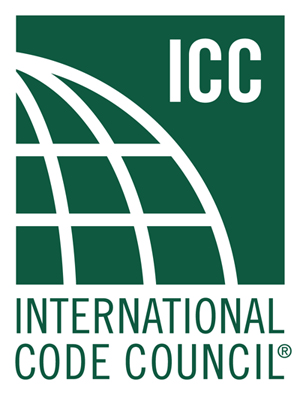Your cart is currently empty!
“Understanding the International Fire Code: Global Safety Standards”

Exploring the International Fire Code (IFC): Global Standards for Fire Safety
The International Fire Code (IFC) is a comprehensive set of regulations designed to ensure fire safety in buildings and structures worldwide. As fire hazards can have devastating effects, adopting a standardized code like the IFC helps mitigate risks and save lives. This article delves into the key components, global implementation, and the benefits and challenges associated with adopting the IFC.
Introduction to the International Fire Code (IFC)
The International Fire Code (IFC) is a model code developed by the International Code Council (ICC) to establish minimum regulations for fire prevention and fire protection systems. It is designed to be adopted and enforced by jurisdictions around the world to ensure a consistent approach to fire safety. The IFC addresses various aspects of fire safety, including building design, construction, maintenance, and use.
The primary goal of the IFC is to safeguard public health, safety, and welfare from fire and explosion hazards. By providing a standardized set of regulations, the IFC helps create a level playing field for architects, engineers, builders, and fire safety professionals. This consistency is crucial for ensuring that all buildings, regardless of location, adhere to the same high standards of fire safety.
The IFC is updated every three years to incorporate the latest advancements in fire safety technology and research. This regular updating process ensures that the code remains relevant and effective in addressing emerging fire hazards and challenges. The IFC is developed through a consensus-based process that involves input from a wide range of stakeholders, including fire safety professionals, building officials, and industry representatives.
One of the key features of the IFC is its flexibility. The code is designed to be adaptable to the specific needs and conditions of different jurisdictions. This allows local authorities to modify and supplement the IFC to address unique fire safety challenges in their regions. The IFC also includes provisions for alternative methods and materials, providing flexibility for innovative fire safety solutions.
The IFC is part of a family of model codes developed by the ICC, including the International Building Code (IBC) and the International Residential Code (IRC). These codes are designed to work together to provide a comprehensive framework for building safety. By adopting the IFC and other ICC codes, jurisdictions can ensure a coordinated and integrated approach to fire and building safety.
For more detailed information on the IFC and its application, you can visit the IBC Manual website, which provides resources and guidance on the implementation of the IFC and other ICC codes.
Key Components and Structure of the IFC
The IFC is organized into several chapters, each addressing a specific aspect of fire safety. These chapters provide detailed requirements and guidelines for various fire safety measures, including fire prevention, fire protection systems, and emergency planning. The structure of the IFC ensures that all critical areas of fire safety are covered comprehensively.
One of the key components of the IFC is the chapter on fire prevention. This chapter outlines the requirements for fire prevention measures, such as the storage and handling of hazardous materials, fire safety inspections, and fire drills. These measures are designed to reduce the risk of fire and ensure that buildings and structures are prepared to respond effectively in the event of a fire.
The IFC also includes chapters on fire protection systems, such as fire alarms, sprinkler systems, and standpipe systems. These systems are critical for detecting and controlling fires, and the IFC provides detailed requirements for their design, installation, and maintenance. By ensuring that fire protection systems are properly installed and maintained, the IFC helps to minimize the impact of fires and protect lives and property.
Another important component of the IFC is the chapter on means of egress. This chapter outlines the requirements for the design and construction of exit routes, including the number, location, and capacity of exits. Properly designed means of egress are essential for ensuring that occupants can safely evacuate a building in the event of a fire.
The IFC also addresses emergency planning and preparedness. This includes requirements for emergency response plans, fire safety education, and training for building occupants and staff. By promoting a culture of fire safety and preparedness, the IFC helps to ensure that everyone is equipped to respond effectively in the event of a fire.
In addition to these core components, the IFC includes chapters on specific types of occupancies, such as residential, commercial, and industrial buildings. These chapters provide tailored requirements for different types of buildings, taking into account the unique fire safety challenges associated with each occupancy type.
For a comprehensive understanding of the IFC’s structure and components, you can refer to the IBC Manual, which provides detailed explanations and guidance on each chapter of the code.
Implementation of IFC Across Different Countries
The implementation of the IFC varies widely across different countries, depending on local regulations, building practices, and fire safety challenges. Some countries have adopted the IFC in its entirety, while others have incorporated specific provisions of the code into their national fire safety regulations. This flexibility allows countries to tailor the IFC to their unique needs and conditions.
In the United States, the IFC is widely adopted and enforced by state and local jurisdictions. Many states have adopted the IFC as part of their building codes, ensuring that all new construction and renovation projects comply with the code’s fire safety requirements. The widespread adoption of the IFC in the U.S. has helped to create a consistent approach to fire safety across the country.
In Canada, the National Fire Code (NFC) serves as the primary fire safety code, but many provinces and territories have incorporated provisions of the IFC into their regulations. This allows for a harmonized approach to fire safety while addressing specific regional needs. The IFC’s influence can also be seen in the development of the NFC, which is updated regularly to reflect advancements in fire safety.
In Europe, the adoption of the IFC varies by country. Some countries, such as the United Kingdom, have developed their own national fire codes but have incorporated elements of the IFC to enhance their regulations. Other countries, particularly those with membership in the European Union, may align their fire safety regulations with the IFC to achieve greater consistency and facilitate cross-border cooperation.
In Asia, countries like Japan and South Korea have adopted fire safety codes that incorporate elements of the IFC. These countries have recognized the importance of aligning their fire safety regulations with international standards to enhance safety and facilitate trade. The IFC’s influence is also evident in the development of regional fire safety codes and standards.
In developing countries, the implementation of the IFC can be more challenging due to limited resources and infrastructure. However, many of these countries are working to improve their fire safety regulations by adopting elements of the IFC and seeking assistance from international organizations. The IFC provides a valuable framework for these countries to enhance their fire safety measures and protect their populations.
For more information on how the IFC is implemented in different countries, you can visit the IBC Manual, which provides resources and case studies on the global adoption of the IFC.
Benefits and Challenges of Adopting the IFC
Adopting the IFC offers numerous benefits, including improved fire safety, consistency in regulations, and access to the latest advancements in fire safety technology. By adhering to a standardized set of regulations, jurisdictions can ensure that buildings and structures are designed, constructed, and maintained to the highest fire safety standards. This helps to reduce the risk of fire and protect lives and property.
One of the key benefits of adopting the IFC is the consistency it provides. With a standardized set of regulations, architects, engineers, builders, and fire safety professionals can work together more effectively. This consistency also helps to streamline the design and construction process, reducing the potential for errors and omissions that could compromise fire safety.
The IFC is regularly updated to incorporate the latest advancements in fire safety technology and research. By adopting the IFC, jurisdictions can ensure that their fire safety regulations remain current and effective in addressing emerging fire hazards and challenges. This helps to enhance the overall safety of buildings and structures and protect occupants from fire risks.
Another benefit of adopting the IFC is the flexibility it provides. The code is designed to be adaptable to the specific needs and conditions of different jurisdictions. This allows local authorities to modify and supplement the IFC to address unique fire safety challenges in their regions. The IFC also includes provisions for alternative methods and materials, providing flexibility for innovative fire safety solutions.
However, adopting the IFC also presents challenges. One of the main challenges is the cost of compliance. Implementing the IFC’s requirements can be expensive, particularly for existing buildings that may need to be retrofitted to meet the code’s standards. This can be a significant financial burden for building owners and operators.
Another challenge is the need for training and education. Fire safety professionals, building officials, and construction industry stakeholders need to be familiar with the IFC’s requirements to ensure proper implementation and enforcement. This requires investment in training programs and resources to build the necessary knowledge and expertise.
For more insights into the benefits and challenges of adopting the IFC, you can refer to the IBC Manual, which provides detailed analysis and case studies on the implementation of the IFC.
The International Fire Code (IFC) plays a crucial role in enhancing fire safety worldwide by providing a standardized set of regulations. While adopting the IFC offers numerous benefits, including improved fire safety and consistency in regulations, it also presents challenges such as the cost of compliance and the need for training. By understanding the key components, global implementation, and the benefits and challenges of the IFC, jurisdictions can make informed decisions to enhance their fire safety measures and protect their populations.
